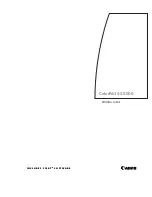
•
<source_VV>
is the name of the virtual volume being copied.
•
<set_name>
is the name of the virtual volume set being copied.
For a complete list of options available for the
createsv
command, see the HP 3PAR Command
Line Interface Reference and the HP 3PAR CLI Help.
Promoting a Virtual Copy
If you have created multiple copies of a base volume, the data on a virtual copy can be rolled
back to the base volume or to any of the virtual copy’s RW parents in the same tree by promoting
a virtual copy. This copies the changes from the virtual copy back onto the base volume, overwriting
the base volume with the copy. The virtual copy still remains on the system.
The virtual copy and the target of the promote must not be exported.
Only one promote operation is allowed at a time within a virtual volume family tree.
To promote a virtual copy back to a base volume or back to any of the virtual copy’s RW parents
in the same virtual volume family tree, issue the
promotesv <VC_name>|set:<set_name>
-pri high
command, where:
•
<VC_name>
is the name of the virtual copy being promoted.
•
<set_name>
is the name of the virtual copy set being promoted.
•
-pri <high|med|low>
specifies the priority of the copy operation before it is started. This
option allows you to control the speed at which the task is performed. If this option is not
specified, the operation is started with default priority of medium. High priority indicates that
the operation will complete as fast as possible. Low priority indicates that the operation will
run slower than the default priority task. You can use the
-pri
option to raise the priority of
the task if your virtual volumes are unavailable and restoring access to the volume is the highest
priority. However, raising the priority of the task may impact host I/O performance.
The priority of the task can also be changed, after it has begun, with the
settask
command.
For more information about changing the priority of a running task, see
“Setting the Priority
of a Running Task” (page 128)
.
For a complete list of options available for the
createsv
command, see the HP 3PAR Command
Line Interface Reference and the HP 3PAR CLI Help.
NOTE:
The
-halt
option cancels a running virtual copy promotion operation. The RW parent
volume is marked with the
cpf
status, which indicates that the promotion failed. The
cpf
status
can be cleared using the
promotevvcopy
command or by issuing a new instance of the
promotesv
command. This option cannot be used in conjunction with any other option.
To halt volume export, you must delete all VLUNs associated with the volume as described in
“Unexporting Virtual Volumes” (page 91)
. After you delete all VLUNs, you can use the volume as
the destination volume for a physical copy.
If you are using HP 3PAR Remote Copy Software, you can optionally promote the virtual copy if
the base volume is in a Remote Copy group. See the HP 3PAR Command Line Interface Reference
for detailed information about the
promotesv
command. For details about Remote Copy, see the
HP 3PAR Remote Copy Software User's Guide.
Modifying a Virtual Copy
Any existing virtual copy can be modified to have a new name, new allocation warnings and
limits, and adhere to new policies. To modify an existing VV, issue the
setvv
command. For
details on all of the
setvv
command arguments and their usage, see the HP 3PAR Command Line
Interface Reference.
96
Managing Virtual Volume Copies
















































